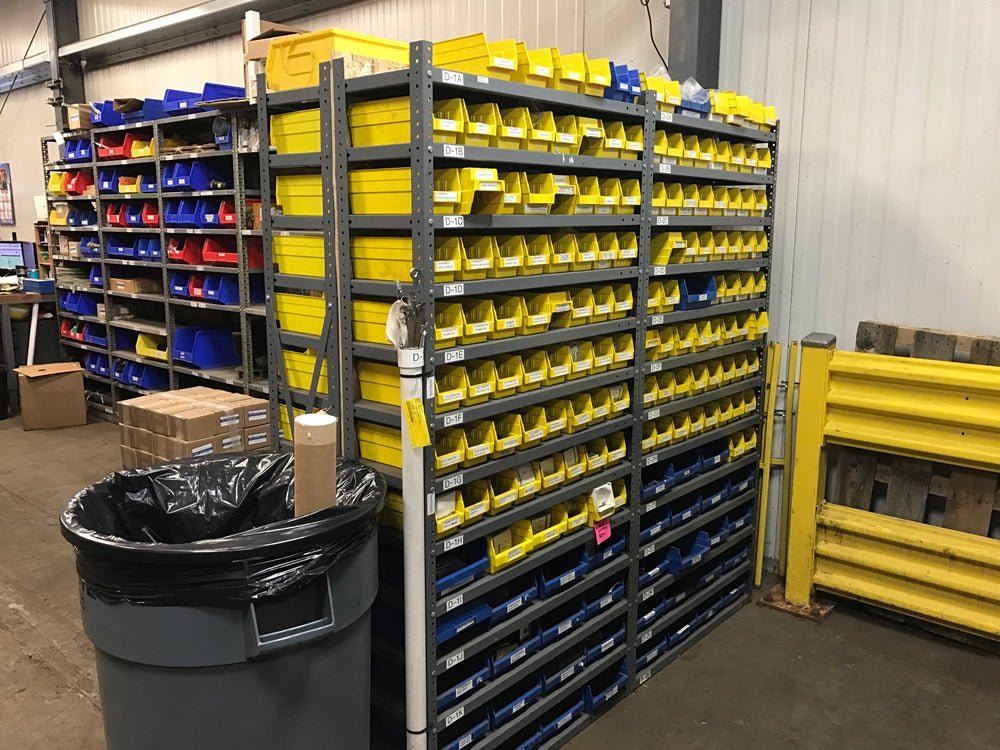An organized workshop isn't just a visual delight—it's essential for safety, efficiency, and productivity. Whether you're a plumber, electrician, mechanic, or hardware store owner, effective workshop storage solutions can significantly streamline your workflow, reduce downtime, and boost profitability. Here's your ultimate guide to maximizing your workshop space.
1. Assess Your Storage Needs
Before diving into specific solutions, evaluate your space and inventory. Consider:
-
Types and sizes of tools and supplies
-
Frequency of access needed
-
Available workshop space
2. Essential Storage Solutions
A. Shelving Units
Shelving is the backbone of workshop storage.
-
Wire Shelving: Durable, allows airflow, ideal for moisture-rich environments.
-
Solid Shelving: Suitable for heavy equipment, easier to clean, and prevents small parts from slipping through.
B. Storage Bins
Bins help organize small parts and accessories effectively.
-
Open-front Bins: Quick access, perfect for frequently used items like fittings, screws, or connectors.
-
Stackable Bin Organizers: Maximize vertical space, easy to label, and rearrange as needed.

C. Tool Cabinets and Drawers
Organize specialized tools neatly and securely.
-
Rolling Cabinets: Mobile, lockable, ideal for workshops needing flexible arrangements.
-
Wall-mounted Drawers: Great for saving floor space and providing quick access.
3. Inventory Management and Labeling
Proper labeling ensures efficient access and reduces downtime.
-
Clearly label bins and shelves.
-
Use durable labels resistant to dirt, moisture, and grease.
-
Implement a simple inventory tracking system, such as barcode labels or QR codes for easy reordering.
4. Space Optimization Strategies
Vertical Storage
Maximize your available vertical space:
-
Install pegboards and wall hooks for tools.
-
Use overhead storage racks for bulky, less frequently used items.
-
Consider mezzanine levels for significant space increases in large workshops.
Zone-based Organization
Arrange your workshop by work zones:
-
Designate specific areas for storage, assembly, repairs, and cleaning.
-
Keep frequently used tools closest to their work areas.
5. Maintenance and Safety Practices
Maintaining organized storage contributes to a safer and more productive environment:
-
Regularly audit and reorganize to prevent clutter.
-
Immediately repair or replace damaged shelving or bins.
-
Keep aisles and walkways clear to reduce accidents.
6. Recommended Best Practices
-
Conduct quarterly reviews of your storage setup.
-
Engage your team in organization and maintenance processes.
-
Invest in high-quality, durable storage solutions that withstand daily use.
7. Real-world Success Story
An automotive workshop reorganized its space using stackable bins and clear labeling systems. Productivity increased by 25%, and inventory tracking accuracy improved significantly, reducing unnecessary downtime and increasing customer satisfaction.
Conclusion
Effective workshop storage is more than aesthetic—it's a foundational aspect of operational success. Implementing strategic storage solutions will enhance your workflow, safety, and overall efficiency, turning your workshop into a model of organization and productivity.

